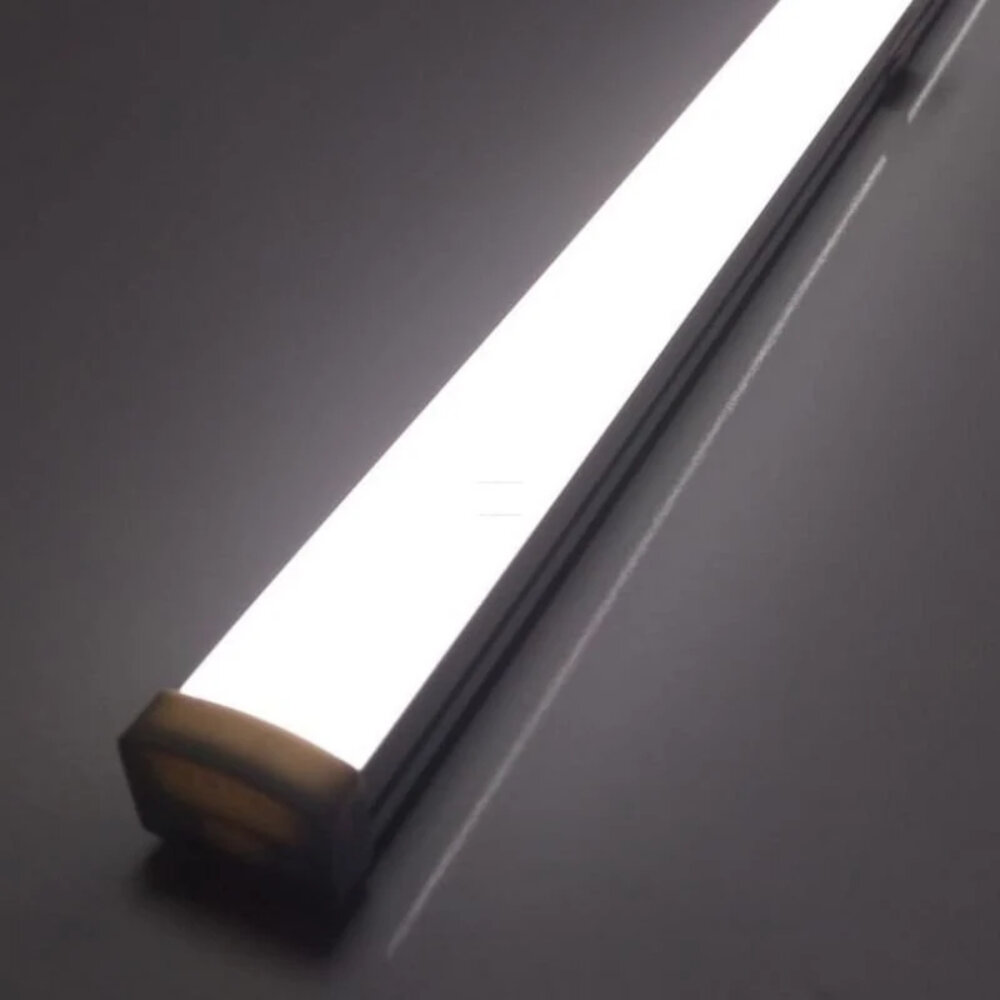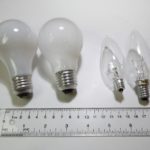60 Watt LED Light Bulb: How Many Amps Does It Use?

Light bulbs have come a long way since their invention in the late 1800s. With advancements in technology, there are now various types of bulbs available on the market, including LED bulbs. LED bulbs have become increasingly popular in recent years, thanks to their energy efficiency and long lifespan. However, with their growing popularity, many people are left wondering how many amps a 60 Watt LED light bulb uses. To understand how many amps a 60 Watt LED light bulb uses, it is essential to first understand the basics of electricity. Amps, or amperes, are a measure of electrical current, which is the flow of electric charge. Watts, on the other hand, are a measure of power, which is the rate at which energy is used or transferred. Therefore, to determine how many amps a 60 Watt LED light bulb uses, we need to consider both the wattage of the bulb and the voltage of the circuit it is connected to.
LED technology, or light-emitting diodes, is a highly efficient and long-lasting alternative to traditional incandescent light bulbs. Unlike incandescent bulbs, which produce light by heating a filament, LEDs emit light through a process called electroluminescence. This process involves the movement of electrons through a semiconductor material, which causes the release of energy in the form of light. LED bulbs use significantly less energy than incandescent bulbs, making them more environmentally friendly and cost-effective in the long run. Additionally, LED bulbs have a longer lifespan, with some models lasting up to 25,000 hours or more. Overall, LED technology is a smart choice for anyone looking to reduce their energy consumption and save money on their electricity bills.
Knowing the amperage for electrical safety is crucial for preventing electrical hazards and accidents. Amperage refers to the amount of electrical current flowing through a circuit, and it is directly proportional to the amount of heat generated by the circuit. If the amperage exceeds the capacity of the wiring or the electrical device, it can result in overheating, short circuits, and even fires. Therefore, it is essential to know the amperage rating of your electrical devices and wiring to ensure they can handle the current without causing any safety risks. By understanding the amperage and taking appropriate safety measures, you can protect yourself and your property from potential electrical hazards.
Understanding Watts and Amps

Watts and amps are critical units of measurement in the field of electrical engineering. Understanding these units is essential in determining the effectiveness and performance of electrical devices. Watts refer to the amount of energy that is being consumed or produced by an appliance, while amps denote the flow of electric current in a circuit. In electrical systems, watts are the product of current and voltage, while amps represent the amount of current flowing through a circuit. As such, it is critical to consider both units when evaluating the efficiency of an appliance. The amount of amps used by a 60-watt LED light bulb is dependent on several factors, including the voltage of the circuit and the resistance of the bulb. Generally, a 60-watt LED bulb will use less than 1 amp of electric current when connected to a 120-volt circuit. However, the amount of current consumed may vary depending on the specific type of bulb and the circuit’s voltage. Understanding the relationship between watts and amps can help individuals choose the right bulbs for their electrical systems and ensure that they are using power efficiently.
Watts and amps are two units of measurement used to quantify different aspects of electrical circuits. A watt is a unit of power, which describes the rate at which energy is used or produced. It is calculated by multiplying voltage by current, and is typically used to describe the power consumption of electrical devices. In contrast, an amp is a unit of electrical current, which is the flow of charged particles through a conductor. It is typically used to describe the amount of current flowing through a circuit, and is calculated by dividing the total amount of charge passing through a conductor by the amount of time it takes to pass. Understanding the difference between watts and amps is essential for properly designing and using electrical circuits.
The relationship between watts and amps is a fundamental concept in electronics and electrical engineering. Watts measure the amount of power consumed by an electrical device, while amps measure the rate of flow of electric current. The relationship between watts and amps is determined by Ohm’s law, which states that the power consumed by an electrical device is equal to the product of the voltage applied and the current flowing through it. Therefore, if a 60-watt LED light bulb is connected to a 120-volt power source, it will draw 0.5 amps of current. Understanding this relationship is crucial when choosing electrical devices and designing electrical circuits, as it helps ensure that the components are compatible and can handle the required amount of power.
Calculating the amperage for a 60-watt LED bulb can be done by dividing the wattage by the voltage. Typically, most LED bulbs operate at a voltage of 120 volts. Therefore, the amperage for a 60-watt LED bulb would be 0.5 amps. It’s important to note that the amperage may vary slightly depending on the specific LED bulb and the voltage it operates at. Additionally, it’s essential to ensure that the amperage is within the range of the circuit breaker or fuse to avoid overloading and potentially damaging the electrical system. Overall, understanding the amperage of a 60-watt LED bulb is crucial for proper electrical planning and safety.
Factors Affecting Amperage Usage

There are several factors that can affect the amperage usage of a 60-watt LED light bulb. The first factor is the voltage supplied to the bulb. If the voltage supplied is higher than the rated voltage of the bulb, the amperage usage will increase. On the other hand, if the voltage supplied is lower than the rated voltage, the amperage usage will decrease. Therefore, it is important to ensure that the voltage supplied to the bulb is within the rated voltage range. This information can usually be found on the packaging or the bulb itself. Another factor that can affect the amperage usage of a 60-watt LED light bulb is the temperature of the environment in which it is being used. LED bulbs are known to be more efficient than traditional incandescent bulbs, and they generate less heat. However, if the bulb is being used in a very hot environment, such as a closed fixture or a room with no ventilation, the heat generated by the bulb can increase the amperage usage. This is because the higher temperature can cause the resistance of the bulb to decrease, which in turn increases the current flowing through it. Therefore, it is important to ensure that the bulb is being used in an environment where the temperature is within the recommended range.
Voltage is an essential factor to consider when using an electrical circuit. It is the measure of the electric potential energy per unit charge in the circuit. This energy is responsible for the movement of the electric charge from one point to another. The voltage in a circuit determines the amount of current that flows through it. The higher the voltage, the more current will flow through the circuit, and vice versa. In the case of a 60 Watt LED light bulb, the voltage required to operate it will depend on the specific bulb and circuit it is connected to. It is important to ensure that the voltage of the circuit matches the voltage requirements of the LED light bulb to prevent damage to the bulb and ensure optimal performance.
LED bulbs are highly efficient as they consume less power compared to traditional incandescent bulbs. A 60-watt LED light bulb consumes around 0.5 amps of electricity, making it a cost-effective choice for home and commercial usage. The energy-saving capability of LED bulbs is due to their ability to convert most of the energy into light, while only a small portion of it is lost as heat. This makes them environmentally friendly and reduces the carbon footprint. Additionally, LED bulbs have a longer lifespan than traditional bulbs, which means less frequent replacements and reduced waste. Overall, LED bulbs are an excellent choice for those looking to save money on their energy bills while also helping the environment.
The temperature of a bulb during use is a crucial factor to consider for both safety and efficiency. Traditional incandescent bulbs produce a significant amount of heat, with the majority of the energy consumed being converted into heat rather than light. In contrast, LED bulbs are much more energy-efficient and produce less heat during operation. The temperature of an LED bulb during use is typically much lower than that of an incandescent bulb, making it safer to handle and reducing the risk of fire hazards. However, it is important to note that the temperature of an LED bulb can still vary depending on factors such as the design, materials used, and the amount of power it is consuming. Therefore, it’s important to choose an LED bulb with appropriate wattage and to follow the manufacturer’s guidelines for safe usage.
Comparison to Incandescent Bulbs

When it comes to comparing LED bulbs to incandescent bulbs, there is a clear winner in terms of energy efficiency. LED bulbs use significantly less energy than incandescent bulbs, which can save consumers a significant amount of money over time. In fact, a typical 60-watt incandescent bulb uses about 60 watts of electricity to produce light, while a 60-watt LED bulb uses only about 10 watts of electricity. This means that an LED bulb can produce the same amount of light as an incandescent bulb while using significantly less energy, which translates into lower energy bills for consumers. In addition to their energy efficiency, LED bulbs also have a longer lifespan than incandescent bulbs. While an incandescent bulb typically lasts for about 1,000 hours, an LED bulb can last for up to 25,000 hours or more. This means that consumers will not have to replace their bulbs as often, which can also save them money over time. Additionally, LED bulbs do not emit as much heat as incandescent bulbs, which can help to reduce cooling costs in the summer months. Overall, LED bulbs offer a clear advantage over incandescent bulbs in terms of energy efficiency, lifespan, and cost savings for consumers.
LED bulbs are known for their energy efficiency, using significantly less electricity than their incandescent counterparts. The amperage usage of a 60 watt LED bulb is typically around 0.5 amps, while a 60 watt incandescent bulb can use up to 0.5-1.2 amps. This means that using an LED bulb reduces overall power consumption and can lead to cost savings on electricity bills. Additionally, LED bulbs have a longer lifespan than incandescent bulbs, making them a more sustainable choice for lighting needs. With advancements in LED technology, it’s becoming easier and more affordable than ever to make the switch to energy-efficient lighting.
LED bulbs are known for their energy efficiency and are increasingly becoming popular as a replacement for traditional incandescent bulbs. One of the main benefits of using LED bulbs is their low power consumption, which means they use less electricity and therefore, help reduce energy bills. Compared to incandescent bulbs, LED bulbs use up to 80% less energy, making them an eco-friendly option for lighting. Additionally, LED bulbs have a longer lifespan, which means they last longer and require less frequent replacements, reducing waste and saving money in the long run. They also emit less heat, making them safer and more comfortable to use, especially during the summer months. Overall, LED bulbs are a smart choice for anyone looking to save energy, reduce their carbon footprint, and save money on electricity bills.
It is crucial to understand the amperage usage of electrical appliances, such as the 60 Watt LED light bulb, to ensure electrical safety. Amperage is a measure of the rate of flow of electric current, and exceeding the amperage capacity of a circuit or appliance can result in overheating, electrical fires, or even electrocution. Knowing the amperage usage of an appliance can help prevent overloading circuits and causing potential hazards. Additionally, understanding the amperage usage can aid in proper electrical wiring and installation, as well as selecting the appropriate circuit breaker or fuse. Overall, having knowledge of amperage usage is essential for safe and efficient use of electrical appliances.
LED bulbs are an excellent alternative to traditional incandescent bulbs when it comes to energy efficiency and cost savings. Compared to incandescent bulbs, LED bulbs consume significantly less energy to produce the same amount of light, thus enabling energy savings of up to 80%. This translates into lower electricity bills and a reduced carbon footprint. Additionally, LED bulbs have a longer lifespan, requiring fewer replacements, which further reduces costs. By switching to LED bulbs, households and businesses can save money while contributing to a more sustainable future.
In conclusion, choosing the right bulb for your needs can be a daunting task, but it doesn’t have to be. Consider the brightness, color temperature, and lifespan of the bulb when making your decision. LED bulbs are a great option for those looking for energy efficiency and longevity, while incandescent bulbs may be better for those looking for a warm, cozy atmosphere. It’s important to also consider the compatibility of the bulb with your fixtures and any dimming capabilities you may need. Ultimately, taking the time to make an informed decision can lead to a more comfortable and efficient lighting experience in your home or workspace.
Conclusion

In conclusion, the number of amps used by a 60 watt LED light bulb depends on the voltage of the electrical system it’s connected to. Generally, a 60-watt LED bulb will draw around 0.5 amps at 120 volts, while it will draw around 0.25 amps at 240 volts. It’s important to keep in mind that these numbers are approximate and can vary depending on factors like the manufacturer and the quality of the bulb. Nevertheless, LED bulbs are known for being energy-efficient and consuming less power than traditional incandescent bulbs, making them an excellent choice for those looking to save on their electricity bills and reduce their carbon footprint.




